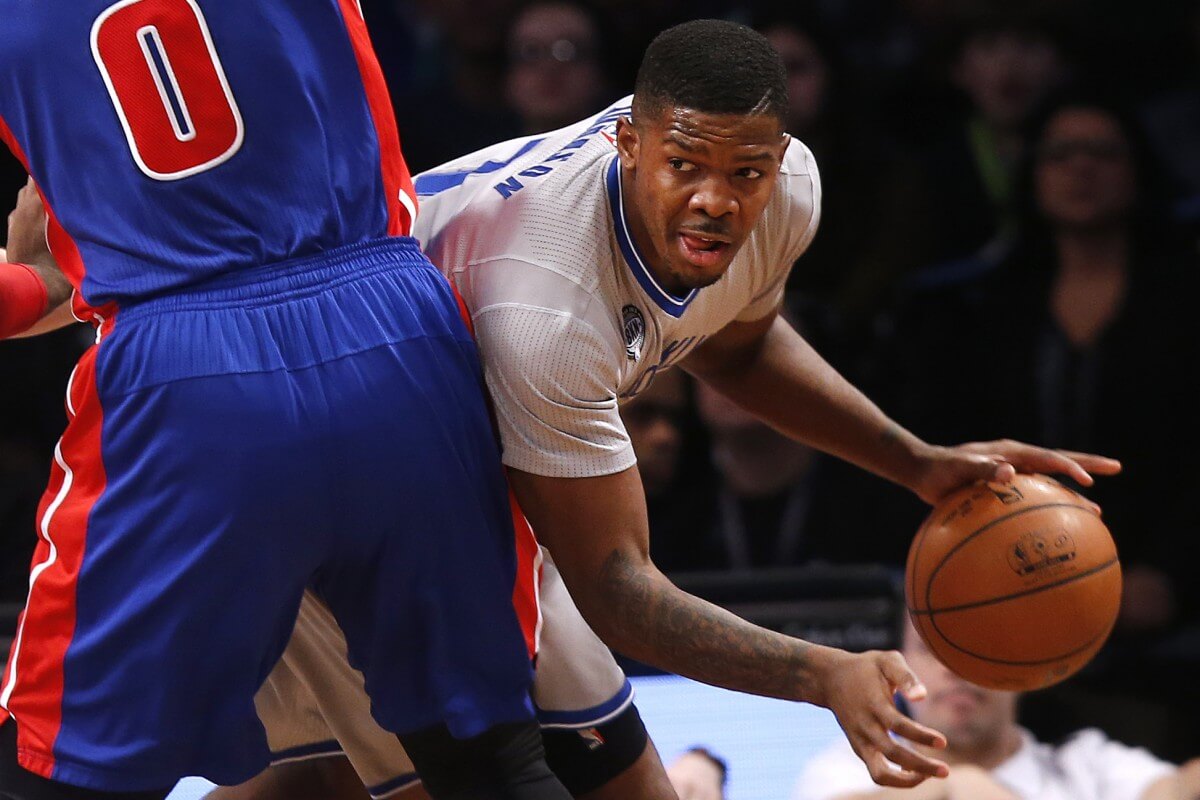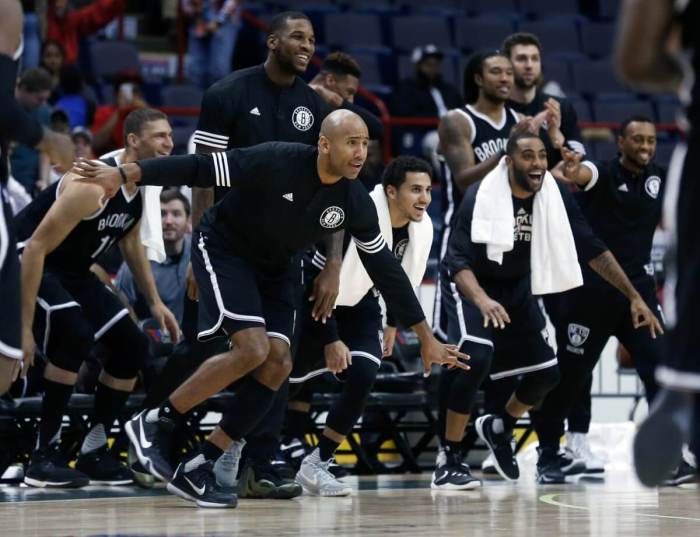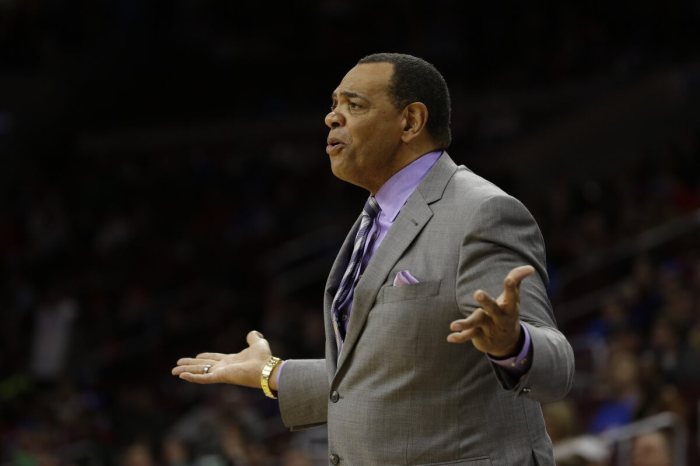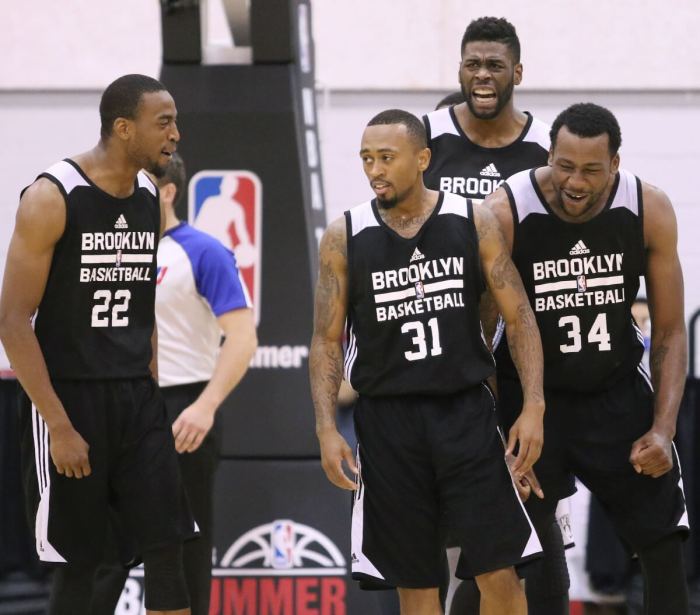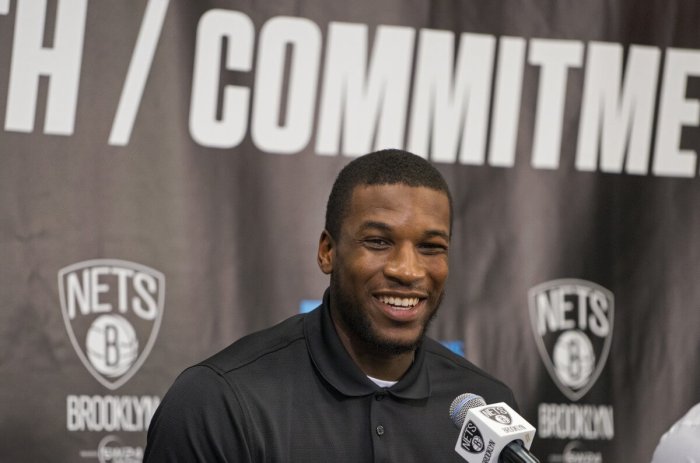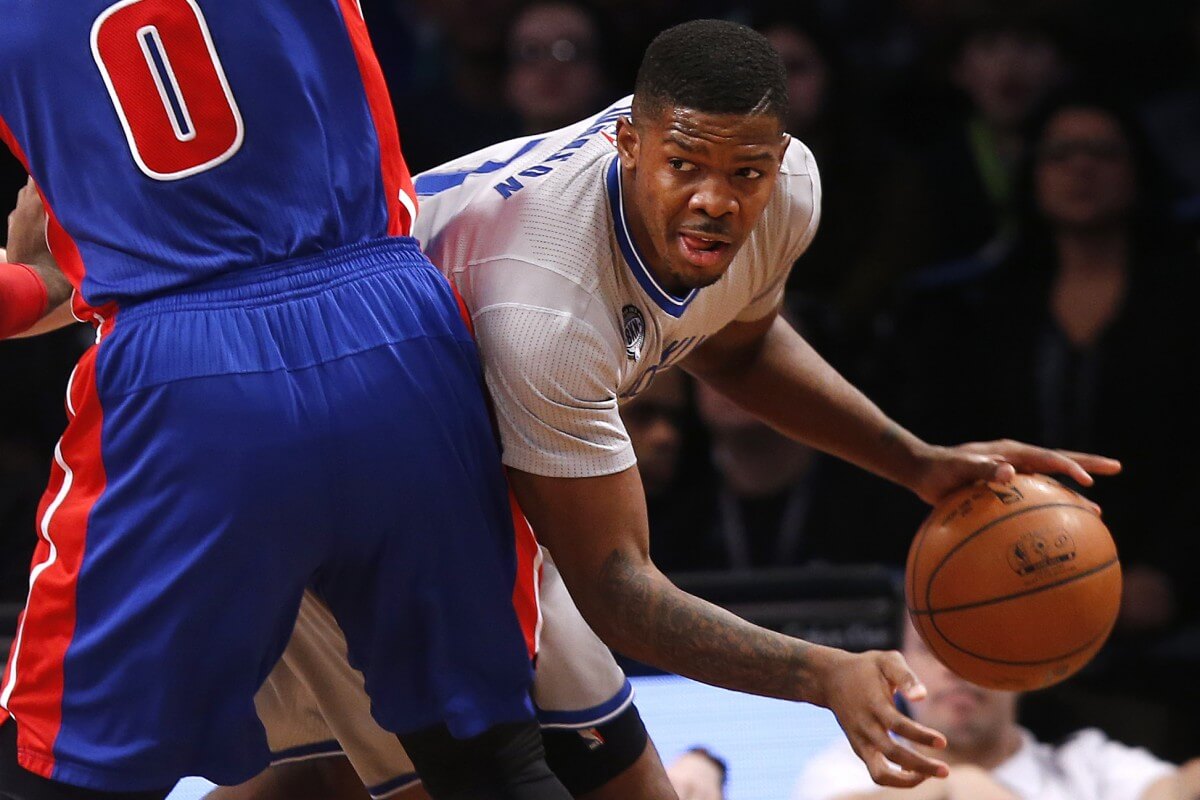
The Brooklyn Game’s Official Season Outlook & Prediction For the 2015-16 Brooklyn Nets.
Here are three words I used to describe the Nets last season: hopeless, uninspiring, zombies. Not because the team was terrible, but because they had undershot their expectations so spectacularly and expensively in previous seasons that there was nothing left to root for. It was an undead wasteland. You could’ve used the term “Brooklyn Nets” as a substitute for the feeling you get when boredom strikes. They were going nowhere slow.
Well, slow-forward to today. This is the first year of the post-Deron Williams era, the opening stretch in the team’s new plan to float in this tub of quicksand — that they filled and subsequently dove into — until they breach the surface. So it only seems fitting that Joe Johnson, the last All-Star standing from the team’s three-year spree of luxury tax abuse in Williams’s honor, came up with the unintentional slogan for this year’s trip: “It’s not that bad here.”
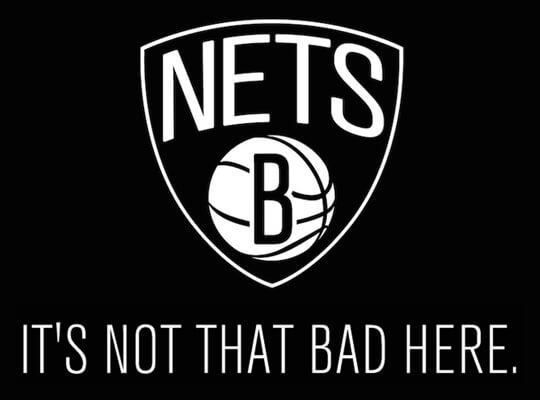
It’s perfect. It’s a fandom Rorschach test. Stay with me on this. You say “it’s not that bad here” under one of two very different circumstances. The first is when something is impossibly bad and you’re a good soldier trying to make the best of the situation. Sure, this is a 350-square-foot studio masquerading as a one-bedroom because you can fit a twin-size mattress in the closet, but once we buy a microwave and the roof stops leaking… it’s not *that* bad here. Or look, Curt Schilling is tweeting again.
The second is when you’re surprised at the quality of something you had absolutely zero expectations for. I fully expected this half-price 2 A.M. Bodega sushi roll to taste like mushy copper and send me straight to the hospital, but it’s actually kind of palatable and I’ve only rushed to the bathroom once on a false alarm. It’s not that bad here!
This second feeling is summed up thusly by Alonzo Mourning:
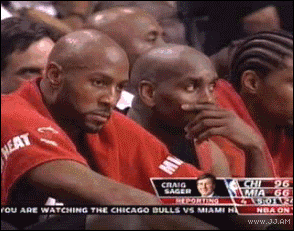
If you’re Type A, you presume that yes, everything is that bad here, and you say it with the type of snide self-deprecating derision that’s typical of someone who’s followed the team since their woebegone days in New Jersey. If you’re the more optimistic Type B, you think they have every shot to make the playoffs, and say it as a dig at rational national pundits (and probably at Deron Williams) who don’t project the Nets to outperform bottom-feeding expectations.
So which is it? I’ll offer my official prediction at the bottom, so scroll down if you want to ruin the fun. But there are a lot of moving pieces that could swing this team in either direction.
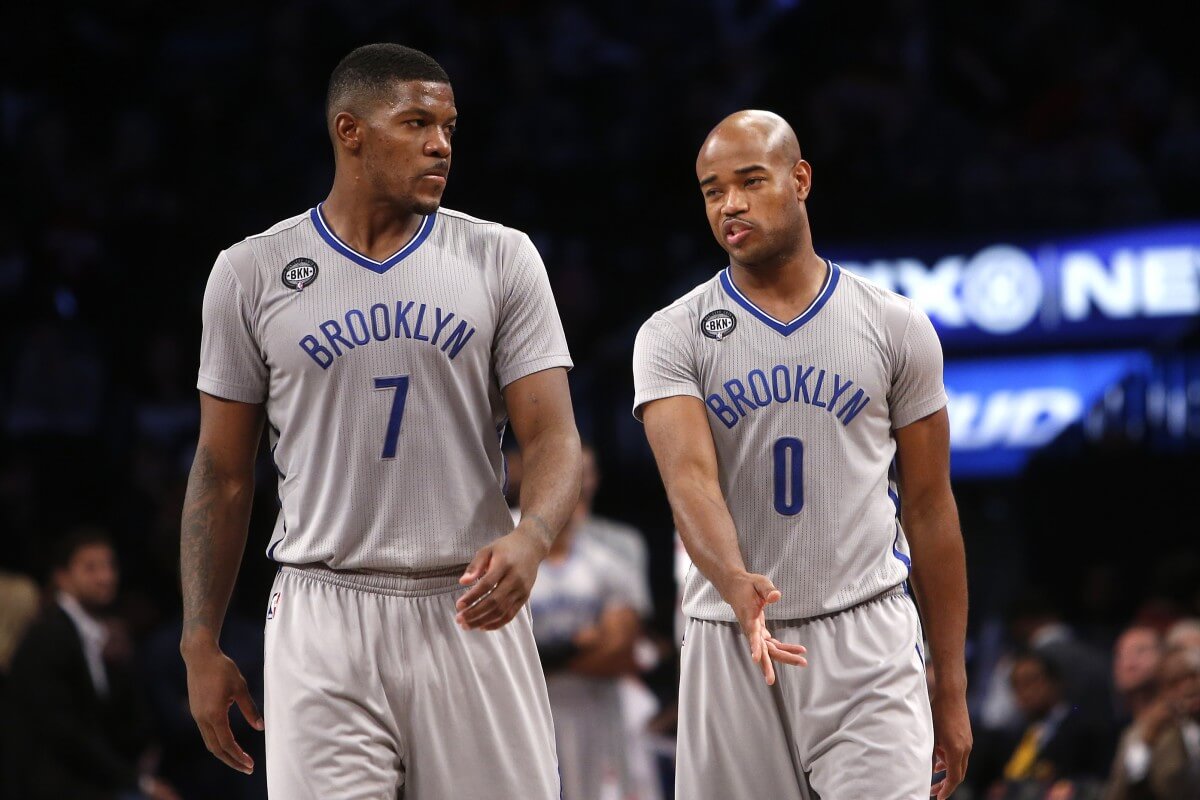
It all starts with Jack
Think about the Nets for a second. No, really.
They have an All-Star center with arguably the best touch in the paint of any player in the league. Next to him is a versatile power forward who can score without needing plays run for him. They have two shooters on the wings, one an ageless veteran with one-on-one skills and the other a burgeoning scorer who put up fantastic shooting numbers in the last two months of the season. The team finished the season 13-6 with this balanced core and snuck into the playoffs. They’ve got continuity in the coaching staff and starting lineup, and added young, athletic, hungry players to fill the void off the bench.
But peel back the layers, and the onion starts to smell. Of those 13 wins, eight came against non-playoff teams, and another three came against teams missing their All-Stars (the Wizards & John Wall, the Raptors & Kyle Lowry, and the Trail Blazers & LaMarcus Aldridge; the Blazers were also without Nicolas Batum in the fly-across-the-country-for-one-game makeup date). 11 of those last 19 games came at home; only three road games came against playoff teams, and they lost all three, by an average of 27 points per game.
The players they picked up are not established talents but NBA nomads who have spent their careers looking for their NBA niche.
One of the NBA’s enduring binary arguments reduces NBA fans into two factions: pro-analytics and pro-intangibles. Part of that is because we treat sports like George Carlin treated other drivers: you’re either an idiot or a maniac. But the debate between the measurable and intangible will never die, and it’s part of the fun.
The Nets are central to that debate. Most rational, analytic projections put them between 20 and 25 wins; more optimistic people, partially citing the team’s newfound looseness, have them fighting for a playoff spot.
On the analytics hand, the moves the Nets made undoubtedly make them worse. The Nets also lost backups Alan Anderson, Mason Plumlee, and Mirza Teletovic, and replaced them with unproven bench players. The team was flatly average with Deron Williams on the court last season, and well below average without him. Williams’s minutes now go to Jarrett Jack, who arguably had the worst on-court impact of any player in a playoff rotation last season.
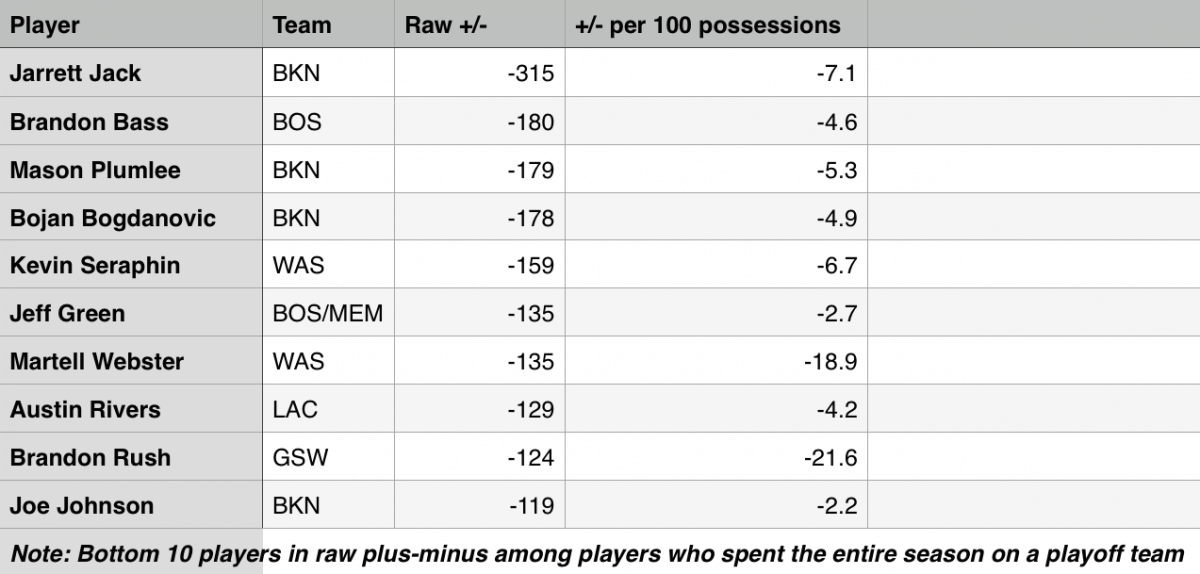
But the intangibles hand couldn’t look better. Players are spending more time together in the locker room. There don’t seem to be any major rifts bubbling. Jack is a more natural team leader and locker-room presence, a future coach who seemingly has friends on every team in the league. He brims with unrelenting confidence, serving as both his greatest asset and weakness.
Jack has the ability to dominate seemingly at random. He’s slithery, energetic, and offered more inspiring moments than Williams, which included: two game-winning shots, a virtuosic and exhausting 52-minute, 35-point, 13-assist, 8-rebound overtime effort in a loss to the Raptors, and a productive playoff matchup against the Hawks that was the more impactful of the two point guards.
He looks the part. He talks the part. Occasionally, he plays the part.
For all his detriments, Jack was one of the league’s fiercest isolation scorers last year, recognizing mismatches and off-balance defenders to get up quick looks. He made some tough, crazy shots against the Hawks in last year’s playoffs, but also caught them sleeping on a few occasions and carved into the paint. If there’s anything he excels at, it’s finding creases for his own shots.
It wasn’t just that small playoff sample. You may be able to recall from memory Jack breaking down a defender off the dribble and pulling up for a maddening mid-range jumper. It turned out he wasn’t so bad at that! Jack scored 38 points on 30 isolation shots in the paint and 59 points on 62 mid-range shots, per SportVU data provided to The Brooklyn Game by Stats LLC.
Also per SportVU, Jack ranked second in points per possession (1.08) and first in effective field goal percentage (54.4%) among all players last year with at least 100 isolations.
Granted, that ability also leads to the problem: dominating the ball more often than you can dominate a game leads to some ugly games. Isolation shots are not high-percentage looks even if you’re good at them, and Jack’s magnified successes only serve to mask his otherwise continuous issues with shot selection and turnovers. A point guard’s best skill should not be setting himself up. He is not a natural distributor in pick-and-roll situations. Across the board, the team’s best players played worse with him on the court.
Jarrett Jack is probably the sneakiest worthless player in the league. You have no idea how much he hurts his team until you dig deeper.
— Haralabos Voulgaris (@haralabob) March 15, 2015
But there’s a flip side to that. Say Joe Johnson didn’t like Deron Williams. Say Joe Johnson’s dislike for Deron Williams cast a pall on his daily mood, which affected his natural rhythms and comfort on the floor, and thus his overall production. Say that applies across the board, not just to Johnson but to Bojan Bogdanovic and Lopez and other players, and even Jarrett Jack himself, who now has a new role to adjust to.
(Side note: there is a glaring lack of Bojan Bogdanovic talk in this preview. I didn’t want to repeat myself. Go here for my thoughts on him.)
If you buy that — and I don’t, but you might — then the Nets could be in for a much more relaxed, comfortable, and efficient year, even if they were better on the floor with Williams last year than without.
Friendly or not, Joe Johnson benefited with Deron Williams on the court with him last year. pic.twitter.com/fibaMydfH2
— devin kharpertian (@uuords) July 31, 2015
Deploying Yo(ga) Johnson
At 34 years old, much of what Joe Johnson can do comes down not to physical domination but the smaller things: setting up teammates and hitting open shots.
Johnson’s passing was actually more productive than his backcourt mate Jack. A higher percentage of Johnson’s frontcourt touches last season ended in an assist, secondary assist, or a pass to a shooting foul. It’s not just Jack: Johnson was actually a more productive passer than any of the team’s likely point guards, using SportVU data provided to The Brooklyn Game by Stats LLC:
Note: the PPP metric itself was a metric I devised using SportVU stats. It is not a Stats LLC metric. SportVU recently released a similar metric that uses a percentage of total passes, rather than frontcourt touches.
That doesn’t mean Johnson is the team’s de facto point guard, but he is the team’s best playmaker now that Williams is gone. With all the talk of Iso-Joe, he doesn’t get enough credit for his bang-bang looks to teammates or slick passes through double-teams.
Editor’s note: there are some videos below and throughout the remainder of this post that may not work on mobile or tablet.
Here’s one quick hitter they ran with Deron Williams last year they could run with Jack to get an open mid-range shot, should all else fail: a HORNS setup (with two big men at the elbows and the wings in the corners) and a quick down-screen to free up the point guard.
It might behoove the Nets to use Johnson as the primary playmaker for a few possessions, running pick-and-rolls with Brook Lopez and surveying for openings, like they did a few times last season.
But that ultimately won’t take much pressure off Jack, who’s thrust into the team’s lead role and will be called on as their primary facilitator. Make no mistake: he is this season’s most crucial player. If he can show last year was an aberration and move forward as a distributor, there’s real potential to surprise in the race for a playoff spot. If he doesn’t, and the Nets don’t find another answer (Shane Larkin?), Brooklyn’s in for a long winter.
“Lionel said he saw (Jack) run pick-and-roll and find guys,” Billy King said before the season. “He (told Jack), ‘You told on yourself.’ Now, going in, Jarrett understands who he’s playing with and what he’s supposed to do.”
Whether or not he can do it over a full season remains to be seen.
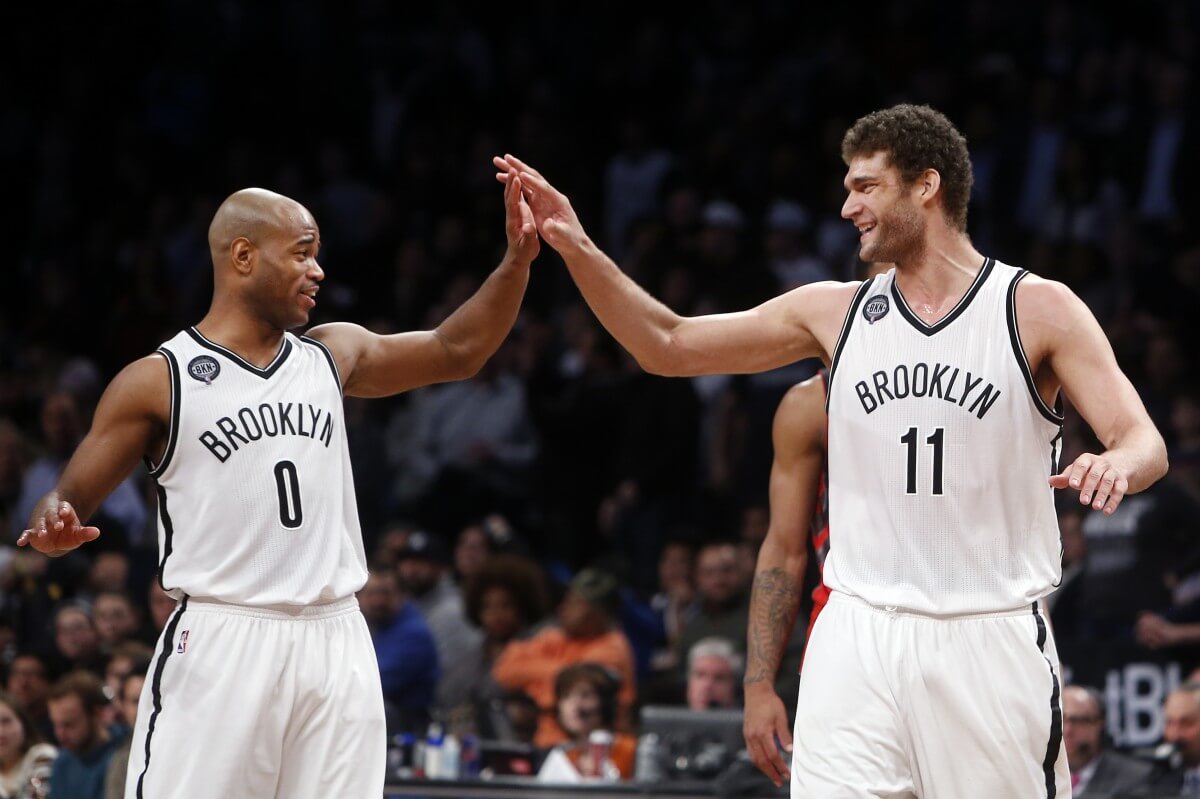
Feeding the big man
I often reference the date February 6th on this site, because I consider that date the turning point of last season for the Nets: it was then that Hollins & Lopez say they had a conversation about adjusting Lopez’s role in the offense, switching him from a traditional post-up big man to a pick-and-roll threat in the paint.
Lopez thrived in his new role: with his post-up attempts slashed nearly 40 percent and Thaddeus Young joining him on the front line a couple of weeks later, the Nets offense thrived, going from 99.5 points per 100 possessions with Lopez on the floor before the 6th to 105.9 per 100 after. That is not a small difference. That’s like going from last year’s Orlando Magic offense (fourth-worst in the league) to the San Antonio Spurs offense (seventh-best), almost entirely by re-jiggering how one guy gets used and replacing another with a younger player.
But if preseason is any indication, things are going back. Lopez hasn’t been getting shots on rolls to the basket like he did down the stretch last season, both because he’s not rolling as much and teammates aren’t hitting him when he does.
He is, however, getting his post-up opportunities. From the available video in preseason (which is missing the Nets-76ers game in Albany), I tracked Lopez’s possessions that ended with a shot, a turnover, or a shooting foul. The results are a bit startling, for a few reasons:
Note: a solid amount of pick-and-pops, very few hits on rolls to the rim, and a ridiculous number of fouls drawn posting up.
Lopez has always been comfortable posting up, and he’s got a litany of moves and counter-moves he can deploy against most one-on-one defenses. He’s also been clear that it’s something he wants to do.
Much of the value of a post-up is in your ability to pass create looks for others around shifting defenses, and Lopez has never been a particularly talented passer, averaging a career low in assist rate last season. But that may not matter if Lopez keeps drawing fouls at such an inhuman rate, and there are simple sets you can run to get Lopez deep post position, which is the primary cause of those fouls.
That comes with your standard dollop of salt: it’s preseason, where experimentation and preservation come with the territory. If Lopez doesn’t want to risk landing awkwardly in the paint for a meaningless preseason game, it makes sense that he’ll limit risk. It might just take time: remember, it took until February before Lopez & Williams got the pick-and-roll going. But that connection is gone, and unless Lopez takes huge strides as a playmaker — something he says he’s trying to do — there’s a ceiling on how effective that offense can be.
The defense
Oy. Lionel Hollins is known as a defensive-minded coach, but Lopez is his only solid rim protector with an NBA pedigree in that department. Willie Reed is an unknown. Andrea Bargnani is, um, not exactly known for his defensive prowess. Thomas Robinson and Thaddeus Young are energetic, but not strong rim protectors, and Young actually ranked at the bottom of the league in protecting the rim. Joe Johnson is not going to expend energy chasing opposing guards around screens. Brooklyn’s best wing defender is arguably Rondae Hollis-Jefferson, who may be the most likable player in the league has yet to play in an NBA game.
The most important NBA defensive vocabulary word is ICE. You’ve probably heard it through your TV or from Tom Thibodeau, and it’s not just for the drinks you need after watching the Nets: ICE is a defensive scheme that pushes pick-and-rolls to one side of the floor, limiting their effectiveness. Our own Justin DeFeo broke down the effectiveness of ICE thusly: “Making a commitment to keeping the ball out of the middle of the floor, or the paint, pushes the offense out to lower-percentage areas of the floor and thus, theoretically, lowers its chance of scoring.”
Here’s an example: it’s clear Williams knows the screen is coming, but it’s not clear if Lopez yelled “ICE!”, or if that was the design at all. Nets brass has said publicly they want Lopez to be more vocal; this is just one example of that on the court.
By design, the Nets run pick-and-rolls with Lopez downing, but their guards struggled to keep pick-and-rolls out of the middle. The Nets were third-worst in the NBA at keeping side pick-and-rolls at the side. A pick-and-roll ballhandler careening down the middle gives him more options to pass to and can scramble a defense, which can lead to open jumpers…
…And easy dunks.
Even when it works, ICE isn’t perfect. For one, it gives up a long jumper to the big man setting the screen, which can be a burden if the screener can shoot from outside. Lopez doesn’t have the quickness to close out on big three-point shooters, and the Nets have historically struggled against those looks. More teams have begun exploiting that weakness by training their big men to hit three-pointers — hey, even Brook Lopez! — and seemingly every team is looking to find their “stretch 4.” It also heaps responsibility on the big man to cut off baseline drives to the basket, which the Nets were not great at doing last season.
So even what works comes with its own drawbacks. Having more athletic players like Young and Reed at the 4 and 5 spots could help, but it’s going to be a long road.
The replacements
The talk is that the Nets have a high-character roster, full of players that actually want to be in Brooklyn. It’s not the hardest code to crack: nobody’s suggesting that Alan Anderson or Mason Plumlee was moping around Brooklyn begging to get out. Hell, Mason Plumlee made a rap song weeks before he was traded where he shot a money gun and asked Jay-Z to “tell the Russians hundreds only.”
(Let the record show that Plumlee’s money gun was shooting out one-dollar bills. Also, we’re burying the lede here: Mason Plumlee guest-starred in a rap song.)
Those guys mattered. Anderson isn’t an impact player, but his loss isn’t nothing. He was the lone legitimate “three-and-D” wing player on a roster that now lacks a player comfortable doing both. With Anderson on the floor, Brooklyn’s defense was better by a full 6.6 points per 100 possessions, the best of any Nets rotation player (save Mirza Teletovic, who missed half the season). His three-point percentage wasn’t phenomenal (.348), but it was good enough to register as a threat, which is all you need to tilt a defense.
The Nets don’t have a singular player that can replace Anderson’s contributions, but they’ve cobbled together a few players on their bench that can make up for it in spurts. Wayne Ellington doesn’t bring Anderson’s defensive acumen, but makes up for it with a career .382 three-point shooting stroke. On a team that lacks bench shooting, Ellington has to make the outside shot his primary weapon — he’s never taken more threes than twos in a season, while Anderson split his inside & outside shots roughly 50-50 when with the Nets.
Defense is a little harder to come by, and it relies more on faith. Rondae Hollis-Jefferson and Markel Brown both project as quality defenders, but neither has proven their worth at the NBA level yet beyond a few hundred scattered minutes from Brown. The NBA doesn’t exactly allow for offense-defense line switches, but Hollins at least has options during the flow of the game if he wants to focus on one end of the court or the other.
The rest is more of a mixed bag. Larkin has yet to play in a situation that highlights his talents, but your lack of success in a bad situation doesn’t guarantee your success in a good one. He had some good moments in preseason and he’s a better shooter than his numbers indicate — Larkin hit 42.9 percent of his “open” three-pointers last year, per NBA.com.
Robinson, Bargnani, and Reed will have to cobble together some combination of Teletovic’s shooting and Plumlee’s dunking. Every one of those guys has something to prove. Robinson needs to prove that he can stick with a legitimate team as a rotation big. Reed has spent multiple years dominating the D-League trying to make #CallWillieUp a thing. It’s time. I talked about Bargnani at length here, so I won’t repeat too much. If there’s anything positive to take, it’s that he has a chance to redeem himself after years of injuries and question marks. The Nets, for all their struggles in the past few years, have been able to get the most out of guys like that.
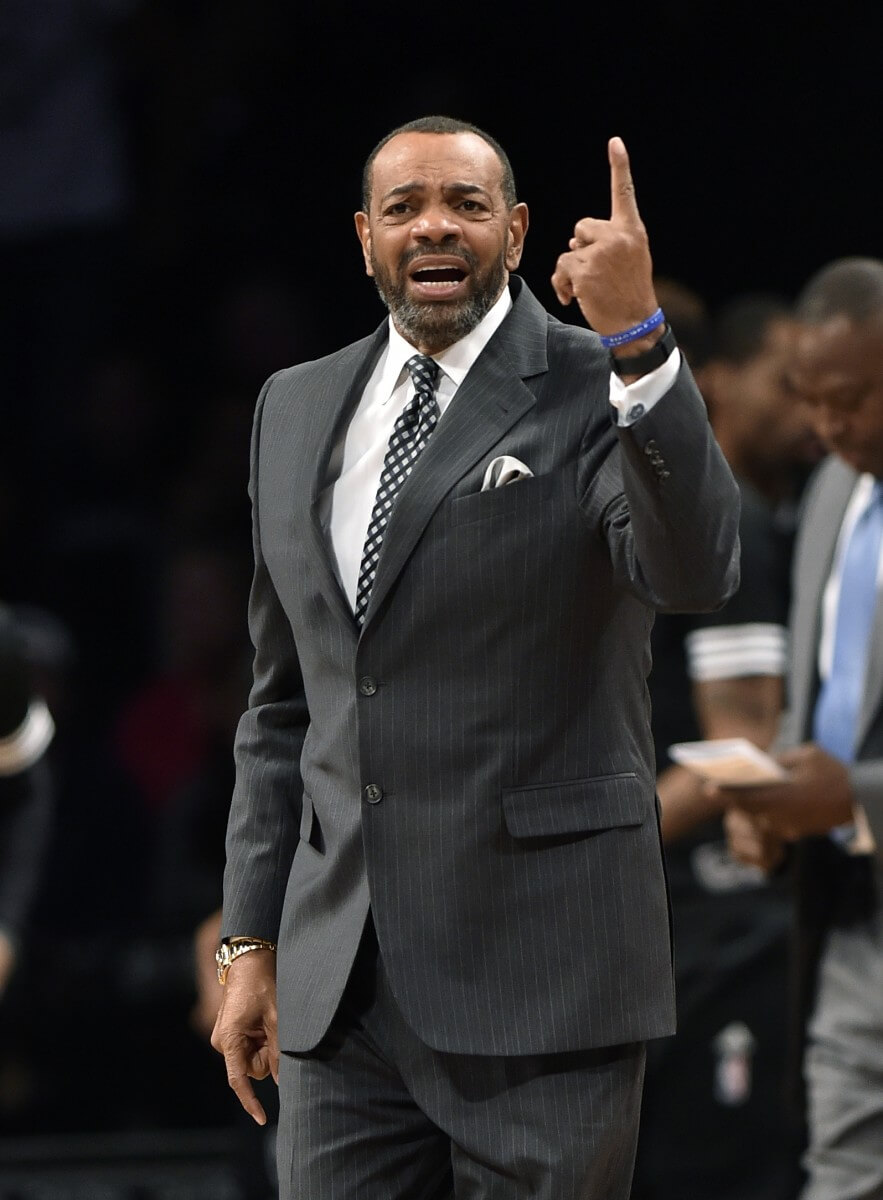
The outlook
There are three major ways to build a franchise in the NBA: through the draft, through trades, and through free agency. Since moving to Brooklyn, the Nets gave up their shot at one (the draft) in the hopes of striking rich through another (trades).
So now they set their sights on the only one left: the free agent market. People around the team have thrown around the term “bridge” or “transition,” but it’s more like a “rainbow” year, because there is a huge freaking pot of gold at the end of this thing. The Nets could find themselves with as much as $40 million in cap space next summer, which Billy King freely admits is the goal.
The problem is, so will everyone else. About 25 teams in the NBA could find themselves with enough cap room to sign a max free agent next offseason, and a couple of others are one cap-cutting move away. There could be $1 billion in cap space coming. Yes, One BILLION.
Presuming they’re out of the Kevin Durant conversation, Mike Conley is the top target. It’s a natural fit: Conley thrived under Lionel Hollins in Memphis, the Nets have a glaring need for a talented point guard, and they can happily offer him an enormous contract. If they can convince Conley to join a Lopez-Young-Bogdanovic core, that’s a solid playoff team in the East.
Beyond Durant and Conley, there’s slim pickings next offseason. Dwight Howard and Al Horford aren’t likely to bolt to fight Lopez & Young for minutes. Chandler Parsons probably won’t split north. The Nets could throw DeMar DeRozan an intriguing offer if Toronto’s not willing to put up big money to retain him. Brandon Jennings could be a target if the Nets miss on Conley. These are solid rotation players, but not big-impact moves, and the team will still have a need at point guard.
Throw together a shallow free agent class, potentially $1 billion in cap space, and 25 teams looking to hit the NBA’s new penthouse-level salary floor — $81 million with a $90 million cap — and you’re looking at a dangerous recipe for mediocrity. There’s no singular player outside of Durant that turns this roster into a contender; if the Nets don’t strike one of the top few players, they might be left shelling out high eight-figure contracts for second-tier free agents. At least this time Travis Outlaw’s not on the market.
With that said: there’s no real punishment for hitting the salary floor — you just pay the remainder to your players — so a few teams, like the Nets, might choose to stay under and wait another year before making a move. That could make for some awkward free agency negotiations next offseason.
The prediction: so how bad is it?
Even if this becomes a lost season, the point of this year isn’t to compete for a championship. It’s about player development, as well as building culture and continuity. Rondae Hollis-Jefferson may not be an impact shooter right away, or for a few years, but the Nets have the opportunity to develop him for the foreseeable future. The team has a litany of young players on tiny contracts. They have the same coach for two straight seasons. That’s a start.
The Nets may wind up stinking this year, and giving up a high lottery pick to the Celtics, who own their draft pick outright. But if they have to do that to maintain their long-term goal, they should. If they’re floundering out of the playoff race, they shouldn’t try to move up by making short-term moves. The goal is to build around that core and maintain cap flexibility moving forward.
If that means sacrificing now, sacrifice now. That pick is never coming back. Whether it yields the next Anthony Davis or the next Ricky Davis, it’s not coming back. The value on that pick today is meaningless to them, and the last thing the Nets should do is mortgage their future again to prove some kind of point about the value of past trades. In the words of Billy King, They’ve done that. It’s not that losing is the right thing to do, it’s that the right thing to do might just require losing now.
That said: the Nets still have no incentive to tank. Kanye West will have chosen his campaign manager before the Nets control one of their own draft picks. The players know that ownership is trying to win, even if that means dealing with the repercussions from the last time ownership tried to win. Hollins, newly 62, isn’t known for his patience with rebuilding teams. Lopez’s inside skills alone should will them to a few victories, and their bench pieces have a lot of untapped upside. That alone might be enough to get them into the playoff race.
But that’s probably not going to happen.
Record Prediction: 28-54, T-13th in East

